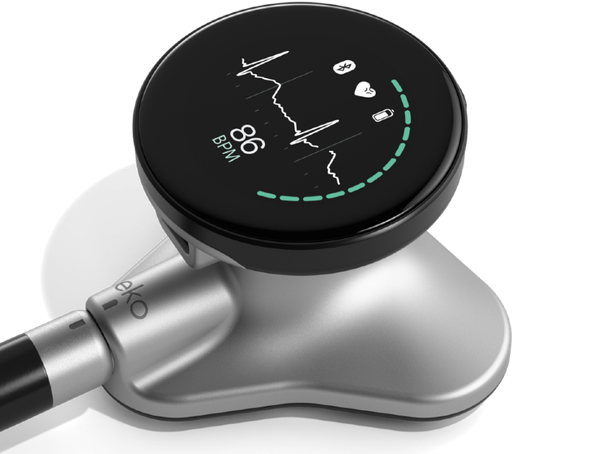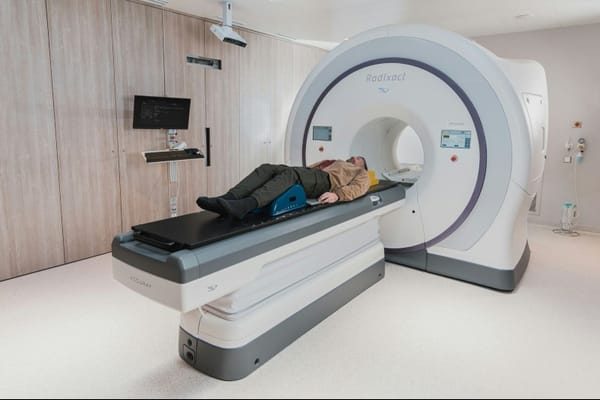Artificial intelligence (AI) is revolutionizing the field of cancer treatment, offering new hope for personalized therapies that could significantly improve patient outcomes. A groundbreaking study led by Dr. Rafael Bernardi at Auburn University has unveiled a novel approach that combines AI with molecular dynamics simulations and network analysis to enhance the prediction of binding sites on cancer-related proteins[1]. This innovative technique promises to accelerate the development of targeted cancer treatments, potentially transforming the landscape of oncology.
Key takeaways:
• AI-powered approach identifies critical interaction points in cancer-related proteins
• Combination of AI, molecular dynamics, and network analysis enhances drug target prediction
• Validated experimental techniques confirm the accuracy of computational predictions
• Method applicable to various proteins, potentially leading to new drug targets for multiple diseases
The power of computational tools in cancer research
The research team's integrated approach leverages cutting-edge computational tools like NAMD and VMD, along with advanced hardware such as NVIDIA DGX systems[1]. This powerful combination allows researchers to delve deeper into the complexities of protein interactions, uncovering potential drug targets that were previously difficult to identify.
Dr. Diego Gomes, the leading author of the study, emphasizes the importance of collaboration between computational teams and experimental validation efforts. This synergy drives forward breakthroughs in the field, bridging the gap between theoretical predictions and practical applications[1].
Unlocking the secrets of PD-L1
The study focused on understanding how therapeutic proteins interact with PD-L1, a protein known to help cancer cells evade detection by the immune system[1]. By accurately predicting binding sites on PD-L1, researchers can develop more effective immunotherapies that unleash the immune system to attack tumors.
This breakthrough could lead to improvements in existing treatments like pembrolizumab (Keytruda), which has already shown promising results in cancer therapy. Moreover, the methods developed in this study have the potential to be applied to many other proteins, opening up new avenues for drug discovery across various diseases, including other types of cancer and autoimmune conditions[1].
AI as a "virtual biopsy" tool
The AI software developed by the research team operates at a pixel-by-pixel level, revealing hidden patterns within tumors that are invisible to the human eye[2]. This advanced imaging analysis, known as radiomics, acts as a "virtual biopsy," providing valuable insights into cancer behavior and the extent of irregularity within tumors.
Mr. Amar Rajgor, an ear, nose, and throat specialist involved in related research on laryngeal cancer, describes radiomics as a "super-powered magnifying glass for medical images"[2]. This technology carefully examines every tiny detail in medical scans, uncovering patterns and irregularities that might otherwise be missed by human observers.
Predicting patient outcomes with AI
In a separate study focusing on laryngeal cancer, researchers identified two important imaging markers: Shape Compactness and Grey Level Non-Uniformity (GLNU)[2]. These markers have shown promise in predicting patient survival rates more accurately than traditional factors such as age or cancer stage.
The ability to predict patient outcomes with greater precision could play a significant role in guiding treatment decisions and delivering personalized medicine. This approach not only enhances the existing patient pathway but also unlocks the full potential of medical imaging data that is currently underutilized[2].
The future of AI in cancer treatment
As AI continues to advance, its applications in cancer treatment are expected to grow exponentially. Future developments may include:
- Real-time treatment response tracking using AI analysis of sequential scans
- Integration of AI-powered imaging analysis with genetic and molecular data for more comprehensive patient profiles
- AI-assisted drug design tailored to individual patient characteristics
- Automated risk prediction models incorporating clinical factors, pathology details, and imaging markers
Conclusion
The integration of AI, molecular dynamics simulations, and network analysis represents a significant leap forward in the quest for personalized cancer treatments. By harnessing the power of computational tools and advanced imaging techniques, researchers are unlocking new pathways to more effective, targeted therapies.
As this technology continues to evolve, it holds the potential to revolutionize cancer management, offering hope for improved outcomes and quality of life for patients worldwide. The future of cancer treatment is becoming increasingly personalized, precise, and powerful, thanks to the remarkable capabilities of artificial intelligence.
To stay informed about the latest developments in AI-powered cancer treatments and other longevity science breakthroughs, subscribe to our newsletter and join the conversation on our social media channels.
References:
- Bernardi, R. et al. (2024). AI-enhanced prediction of binding sites on cancer-related proteins. Journal of the American Chemical Society.
- Auburn University Department of Physics. (2024). AI unlocks new path to personalized cancer treatments.
- Rajgor, A. et al. (2024). Artificial intelligence improves outcome prediction in laryngeal cancer. Journal of Laryngology & Otology.
Citations:
[1] https://healthcare-in-europe.com/en/news/ai-new-path-personalized-cancer-treatments.html
[2] https://healthcare-in-europe.com/en/news/laryngeal-cancer-ai-software-outcomes.html
[3] https://healthcare-in-europe.com/en/tag/488-clinicial-chemistry/index.html














Member discussion